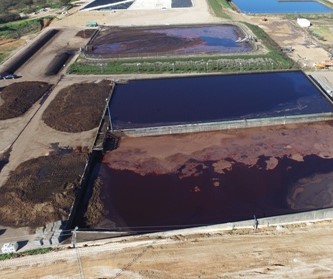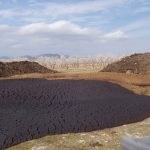Spain is the world’s leading producer and exporter of olive oil, with an area dedicated to olives of approximately 2.5 million hectares. For this reason, the treatment of alperujo is key in the oil generation process.
There are currently around 1,828 olive oil producing entities, including cooperatives and private mills. Of these, 908 are cooperatives and 920 are private mills.
The olive pomace is a by-product of the production of olive oil obtained during the process of centrifuging the olives in the mill, which presents great problems due to its high phytotoxicity.
The pomace oil producer are in charge of revaluing this by-product, from which they obtain pomace oil, biomass; olive bone and pomace.
It is evident that the processing of olive pomace is an important link in the value chain of the olive oil sector, since it allows the by-products of the process to be valued, which currently represents a cost for the oil mills and damages the environment.
Olive pomace composition
Its composition is given by parts of the olive but also with remains of its oil. It has a more solid part that will be the pomace and another part that is somewhat more liquid that is the vegetable water. Its properties include a high water content of 56%. It also has a PH of 5.4 and acid. Organic matter is also the protagonist since it rises with 91%.
Olive pomace treatment and uses
Currently the olive pomace is received in large rafts to apply a physical or chemical process to obtain pomace oil.
Después de la obtención del orujo, se pueden obtener subproductos derivados del alperujo. Tras aplicarle un proceso de cogeneración energética o compostaje, se puede usar para:
After obtaining the pomace, by-products derived from the olive pomace can be obtained. After applying an energy cogeneration or composting process, it can be used for:
- As biomass production
- For production of PHB for the manufacture of bioplastics
- Use for production of enzymes and pectins
- Production of dyes and antioxidants
- Production of exopolysaccharides of commercial interest for the food and cosmetic industry
- As agricultural fertilizer.
Other ways to treat olive pomace are:
- Physicochemical methods: coagulation-flocculation, oxidation and electrochemical processes.
- Biological treatments: activated sludge, anaerobic treatments and processes based on biological membrane reactors. In this case to be treated in small proportion and mixing.
NEW MANAGEMENT SYSTEMS IN OLIVE POMACE
Smallops makes a system for the management of olive pomace available to pomace oil producers and oil mills, making use of our carbon-encapsulated zerovalent iron nanoparticles in anaerobic digestion processes for the generation of high-quality biogas from the alperujo. We offer a new waste management model with the capacity to generate greater profitability in the business.
If you want to know more, get in touch here.



